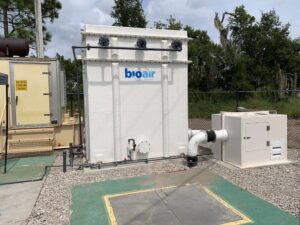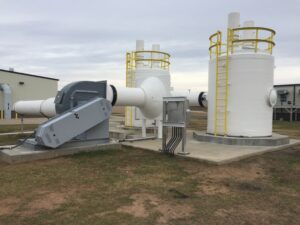The Science Behind Odor Control Systems: How They Work and Why They Matter
 Managing odors is not a simple task. It takes a scientific approach to find odor sources, measure their strength, and choose the right way to control them. Industrial and municipal facilities need to control odors to meet regulations and keep good relationships with nearby communities.
Managing odors is not a simple task. It takes a scientific approach to find odor sources, measure their strength, and choose the right way to control them. Industrial and municipal facilities need to control odors to meet regulations and keep good relationships with nearby communities.
Good data is important when designing odor control systems. Without it, facilities might install systems that don’t fully fix the problem. Webster Environmental Associates (WEA) uses scientific methods to help businesses manage odors with solutions based on real data and industry knowledge.
Key Processes Used in Odor Control Systems
Odor control systems use three main approaches: physical, chemical, and biological. Each one plays a role in reducing odors and improving air quality.
Physical Processes
Physical methods focus on containing and capturing odorous air. These include:
- Containment: Covers and enclosures keep odors from spreading into the air. They help reduce the amount of air that needs to be treated.
- Filtration: Filters remove solid particles from the air before it goes through further treatment. This helps other odor control systems work better.
- Dispersion Control: Ventilation systems move air around to prevent odors from building up in enclosed areas and spreading to other locations.
Chemical Processes
Chemical treatments break down or neutralize odors to make them less noticeable or remove them completely. These include:
- Oxidation: Chemicals like hydrogen peroxide break down odor-causing substances, such as hydrogen sulfide, into less harmful compounds. This method is commonly used in wastewater treatment plants.
- Neutralization: Some chemicals react with odor compounds to remove their smell, which makes the air cleaner before it is released.
- Scrubbing: Scrubbers like chemical scrubbers use liquid solutions to absorb and remove odors from the air.
Biological Processes
Biological odor control uses microorganisms to break down odor compounds naturally. This method is eco-friendly and works well for long-term odor control. Biofilters and biotrickling scrubbers are common biological systems used in wastewater treatment and composting facilities. These systems allow bacteria to consume odor-causing substances and turn them into harmless byproducts.
Choosing the Right Odor Control System for Different Industries
Different industries face unique odor problems. Selecting the right system is important for effective odor control. WEA helps businesses choose the best system based on their specific needs.
Facilities such as wastewater treatment plants often have odors coming from sludge processing and aeration tanks. Biofilters work well for wastewater plants because they provide consistent odor control with low environmental impact.
Factories and processing plants, such as food production and chemical manufacturing, release strong odors from materials and chemical reactions. Chemical scrubbers are a great option for these facilities because they remove odors effectively, even at high concentrations.
Solid waste facilities like landfills and composting sites produce strong odors from decomposing materials. Using enclosures and air extraction systems helps trap and treat odors before they spread.
The Importance of Using Data to Make Odor Control Decisions
 Effective odor control starts with gathering the right information. Facilities that make decisions based on data get better results and avoid unnecessary costs.
Effective odor control starts with gathering the right information. Facilities that make decisions based on data get better results and avoid unnecessary costs.
- Collecting Odor Data: Testing is important to understand the type and level of odors in a facility. WEA uses advanced air and liquid sampling to collect accurate information about odor sources.
- Predicting Odor Movement: Once the data is collected, WEA uses odor dispersion modeling to predict how odors will spread under different weather conditions. This helps facilities place odor control systems in the right locations.
- Customizing Systems for Best Results: Every facility has different needs. Customizing odor control systems based on test results ensures better performance and compliance with regulations. WEA works with clients to design systems that meet their specific goals and budgets.
Why WEA’s Approach Works Best
WEA takes a customized and data-driven approach to odor management. Our team has experience across many industries and uses proven methods to solve odor problems.
- Using Real Data and Expertise: Our recommendations are based on actual test results, not guesses. We use detailed testing to develop odor control plans that work.
- Unbiased Recommendations: Since WEA does not sell odor control equipment, we provide honest recommendations. We focus on finding the best fit for each facility without pushing any specific product.
- Long-Term Support: Managing odors is an ongoing process. WEA offers continued support to help facilities stay compliant and adjust systems as needed. Our team provides regular monitoring to keep systems running efficiently.
Reach Out Today to Learn More
Understanding how odor control systems work helps businesses make better choices to manage emissions. Physical, chemical, and biological methods each offer unique benefits, and choosing the right system requires careful planning.
WEA is dedicated to helping businesses and municipalities find effective ways to control odors. Our experience, data-driven approach, and commitment to customer satisfaction make us a trusted partner. Contact WEA today to learn how we can help with your odor management needs.
